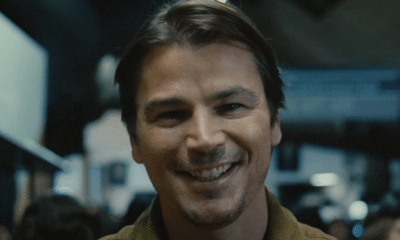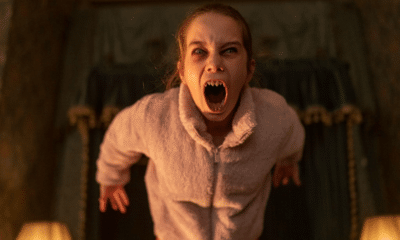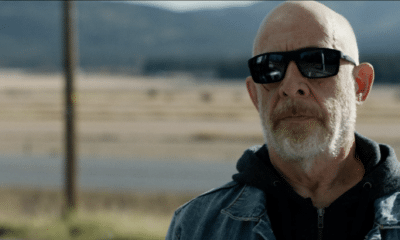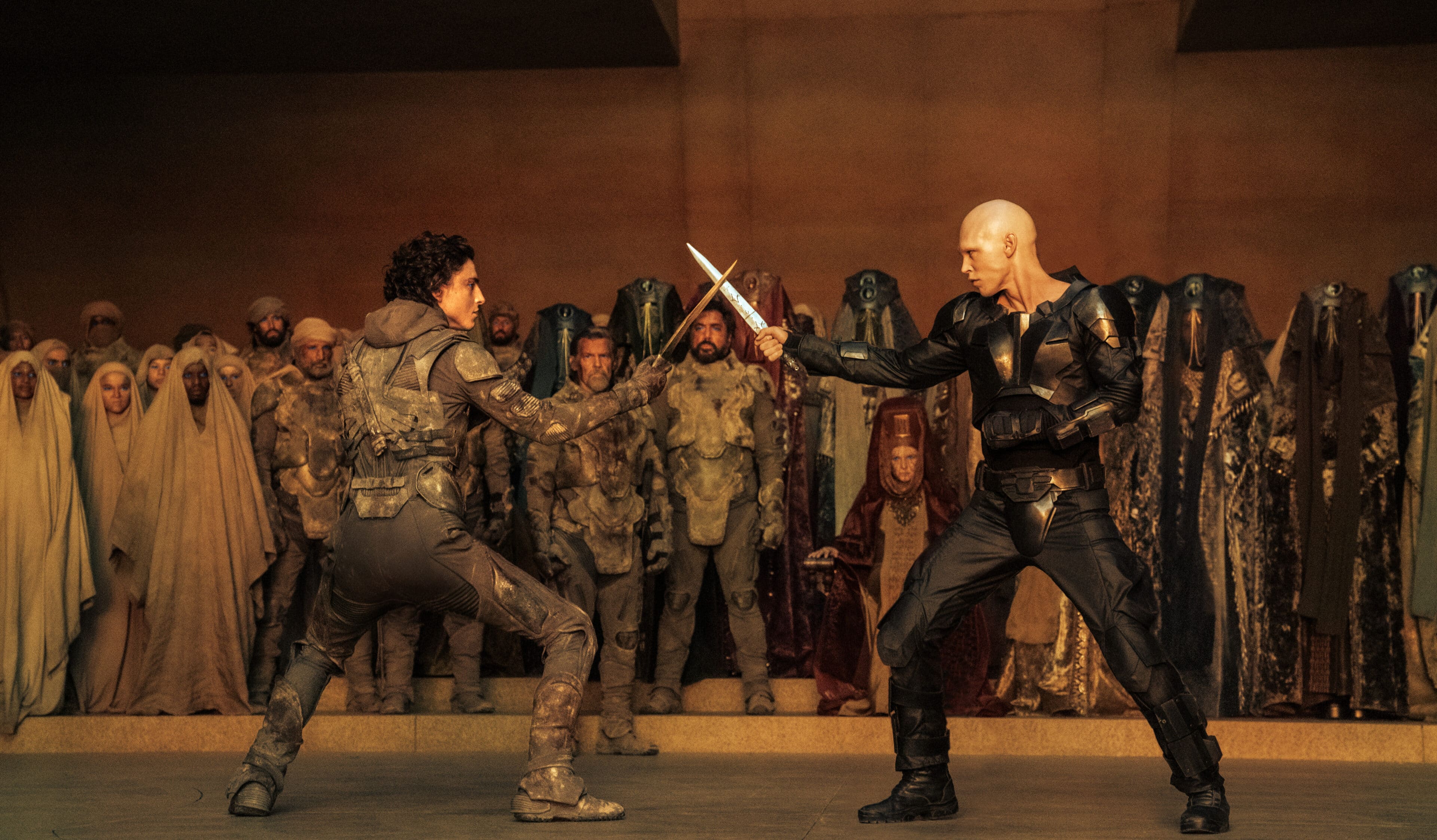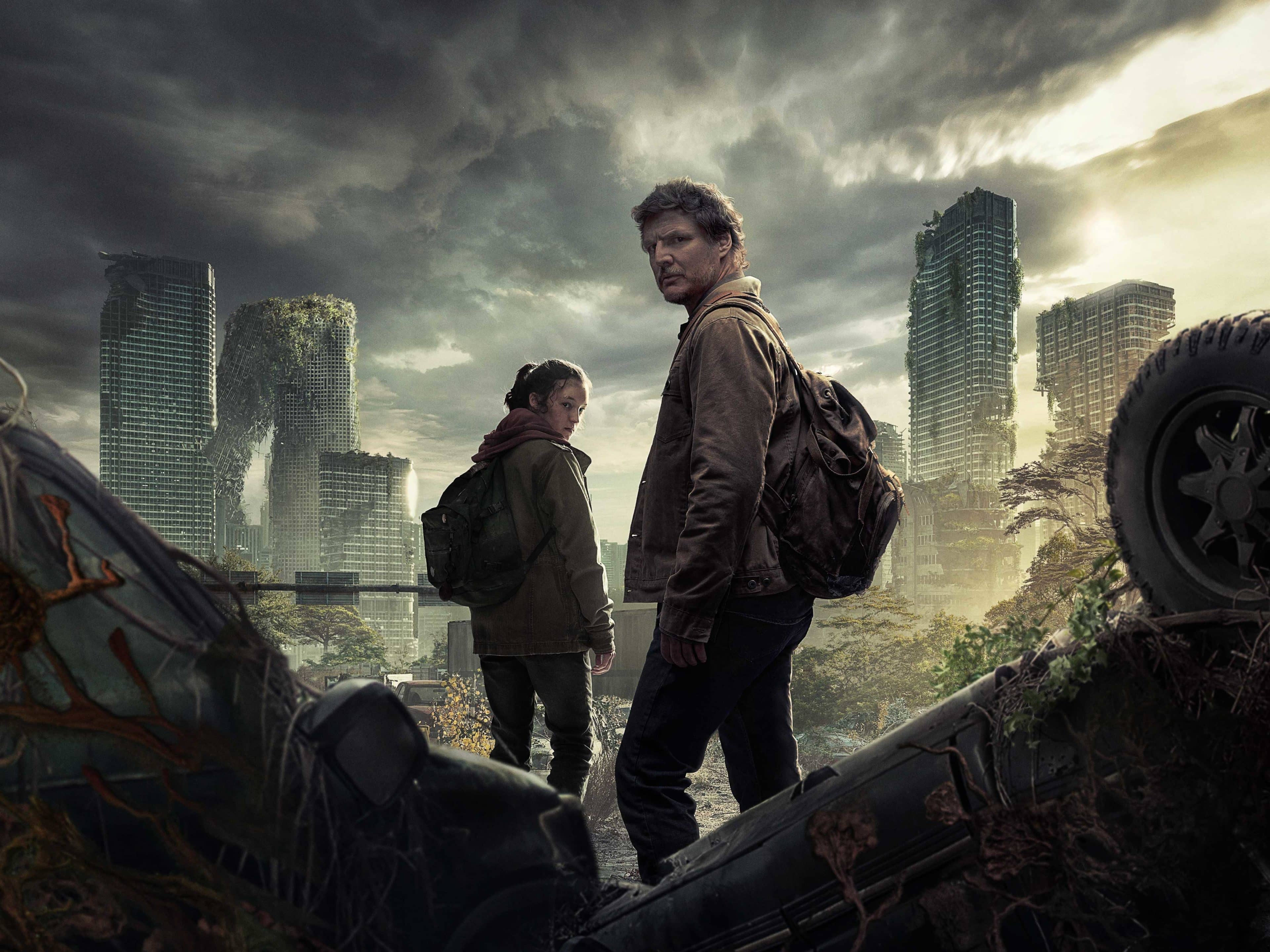One of the few mainstream horror efforts of last year to contain genuine scares was Scott Derrickson’s chilling suspense flick, SINISTER. The film follows true-crime author, Ellison Oswalt (Ethan Hawke), who, along with his wife and children, move into a house where an apparent suicide and murder took place. While his wife and children are unaware of its history, Oswalt is, and he’s hoping to find some much needed inspiration following a career lull. He soon discovers actual footage of said crime, amongst others, and begins his dark obsession with discovering the truth behind the events.
To celebrate the film’s upcoming DVD and Blu-ray release, THN were lucky enough to put some questions to the co-writer of the script, C. Robert Cargill, a film critic, author and well-known contributor to Harry Knowles’ cult movie news website, Ain’t It Cool News; known to many film fans as Massawyrm.
Could you tell us how you went from writing for a well-known movie website to writing you’re own movie?
Scott [Derrickson], my co-writer and director, was a big fan of my writing on the site, and had started to write to me years ago. We shared an almost identical taste in film, so whenever I recommended a film a lot of people shunned, he would change his mind and decide to go see it. Whenever he did that, he’d always end up loving the movie and sending me letters about it. So we wrote back and forth and a friendship grew out of that. Then I happened to be in Vegas one weekend when he was coming into town, so he said, ‘hey, we should get together for a drink’, and we ended up drinking ’til two in the morning at Mandalay Bay. He bounced an idea off me and I bounced the idea of SINISTER off him and he said, ‘I wanna make that movie!’ From there we just slammed on the gas. That was in January two years ago, and by September we were in New York filming. Now the DVD is coming out, just over two years after I pitched the idea.
Were you a fan of Scott’s previous work?
Yeah! I really loved THE EXORCISM OF EMILY ROSE. It was a horror movie that was also existential with its argument of faith versus reason. Then I got to know him when he was working on THE DAY THE EARTH STOOD STILL. There are a lot of things in there that I liked, so yeah, I really dug his work. When he said he wanted to make SINISTER, I was ecstatic and sure enough, he did an amazing job with it.
SINISTER was one of the few films that connected with horror fans in 2012. Could you tell us where the idea originated?
I had seen THE RING and subsequently had a nightmare about going into my attic and finding a box with Super 8 film in it. I spooled one into the projector, and that became the first shot of SINISTER. That haunted me for several years, and as a horror fan I thought it would make a really cool horror movie; I just had to get the story right. Then it was all about working through it, telling a story that no one had seen before, and playing around with ideas. Then, of course, the found-footage movement was really kind of evolving, and the story became a commentary on it.
Because found-footage is an important aspect of SINISTER, albeit with a welcome change in perspective, can we ask how you feel the subgenre is being depicted in film at the moment?
It’s like anything else. There are guys out there who are doing amazing things with it. There are guys doing inventive things with it that aren’t quite working and then there are people that just don’t get it. That happens with every movement and if you go back and look, every single genre has its periods of people just kind of blundering through. My favourite example is in 1981. In 1980, FRIDAY THE 13TH came out and made buckets of money, then 1981 comes along, and there were almost 50 slasher movies that came out. There was almost a slasher movie for every weekend, and if you go through that, there are some real gems in there. Some really good stuff like MY BLOODY VALENTINE. That’s a fantastic slasher film. Then there is something like MADMAN MARZ, which is just goddamn awful… you just have to pick out the gems and find the really good filmmakers.
There is some really interesting stuff going on in found-footage. I’m a big fan of TROLLHUNTER, the Norwegian film. In fact, on both the international and American poster, I’m the big quote on the top of that movie from Ain’t It Cool News. I dig several sequences in the movie V/H/S, and there are a number of indie films that didn’t get much of a release that I’ve loved. Then you have stuff like THE DEVIL INSIDE that came out and wasn’t any good at all. You get that everywhere, especially now it’s becoming an established subgenre. I mean found-footage is its ‘own’ thing, it’s not just a gimmick anymore, it’s actually a method of storytelling audiences accept and it’s up to the filmmakers to figure out those things we don’t have to do anymore; figure out a way to evolve and grow the subgenre. One of the things some filmmakers don’t get is just because it’s found-footage, doesn’t mean you don’t have to write a script, and doesn’t mean you don’t have to get professional actors, reciting a script almost verbatim. You have to develop the story very carefully, you can’t just put a camera in someone’s hand and say ‘go’: ‘Hi, my name is Bill and this is the set of our movie. Here is what we’re doing here. That’s Lindsay, that’s Joe and we’re going to faff around for twenty minutes before anything happens’.
Most of the filmmakers have learned you have to tell a story, and get your exposition out in clever ways so people don’t think it’s being explained to them. You’ve got to have the movie paced. You’re just able to tell it through this medium so it puts us closer to the action and makes us feel like we’re there. CHRONICLE is the perfect example of how you do a found-footage film correctly.
How involved were you on the production side of things?
I was on the set every day of the principle photography, and throughout pre-production Scott would send stuff my way to get my thumbs up or thumbs down. I was heavily involved with the process. There were certain things I did leave solely to Scott. I was on set the whole time to protect the integrity of the script and that’s what he wanted me there for, to have fights with him when things would veer away from what we’d initially written. I was there the whole time making sure what we wrote ended up onscreen, and ultimately it did.
SINISTER certainly has a memorable and striking villain. Are there any plans for him to return?
There has been talk but nothing definite, and nobody has said the words ‘let’s do it’. I think everybody is just waiting to see how everything pans out. It’s still yet to open in a lot of other countries and we have the DVD coming out, so based upon that, people will decide if the world wants to see another SINISTER movie or not.
Did screenwriting come from your previous work as a critic on the website or was it something you’ve always wanted to pursue?
I always wanted to be a fiction writer. I initially started out wanting to be a novelist and just wasn’t able to get anything sold, but I was very young at the time. So I always knew I wanted to write something, whether it be novels or movies, and movies was just the logical choice, simply because I was just so deep in it. I’d seen so many movies and talked movies and understood the nature of it as much as most critics can. So it evolved from that. Writing fiction was always what I wanted to do, and I’ve been blessed by having a movie and a book come out so close together.
Could you tell us of any future projects you have lined up, and if any include working with Scott?
Right now we’re in the middle of working on DEUS EX. We also have a couple of other things we’re discussing. In fact, there are plans to work with Scott as often as possible. There are a couple of other projects he’s attached to that were in development before we began working together, but our plans from here on out is to work together on everything we can.
Where does that inspiration in your writing come from?
The inspiration comes from all over really. The way I describe it to most people is you’re sitting on the bus and you’re looking out the window and you just say ‘you know what would be neat, if this worked like that‘! Everybody does that everyday, but when I get an idea, I ask myself ‘is there a good story in it’? Then you think about whether that story has been told before, or how a story has been told before. Once you’ve worked through the details of these processes, this little gem of an idea that just popped up, eventually becomes an entire story.
Are your plans to continue writing screenplays and novels or have you thought about going back into the critic world?
I don’t know. I really love fiction and for the time being I’m really enjoying it. I’ll never write anything off but there are no plans in the immediate future to go back to being a critic.
THN would like to thank C. Robert Cargill for his time.
SINISTER is available to buy on DVD/Blu-ray in the UK from 11th February, and Cargill’s novel, DREAMS & SHADOWS, is released 28th February.
Intrigued by what you’ve read? Then keep your eyes peeled for our interview with SINISTER director, Scott Derrickson, later this week.
Craig was our great north east correspondent, proving that it’s so ‘grim up north’ that losing yourself in a world of film is a foregone prerequisite. He has been studying the best (and often worst) of both classic and modern cinema at the University of Life for as long as he can remember. Craig’s favorite films include THE SHAWSHANK REDEMPTION, JFK, GOODFELLAS, SCARFACE, and most of John Carpenter’s early work, particularly THE THING and HALLOWEEN.

Latest Posts
-


Film Trailers
/ 1 day agoM. Night Shyamalan’s ‘Trap’ trailer lands
Anew experience in the world of M. Night Shyamalan.
By Paul Heath -


Film News
/ 2 days agoFirst ‘Transformers One’ teaser trailer debuts IN SPACE!
The animated feature film is heading to cinemas this September.
By Paul Heath -


Film Reviews
/ 2 days ago‘Abigail’ review: Dirs. Matt Bettinelli-Olpin & Tyler Gillett (2024)
Matt Bettinelli-Olpin and Tyler Gillett direct this new horror/ heist hybrid.
By Awais Irfan -


Film Trailers
/ 2 days agoNew trailer for J.K. Simmons-led ‘You Can’t Run Forever’
A trailer has dropped for You Can’t Run Forever, a new thriller led by...
By Paul Heath

